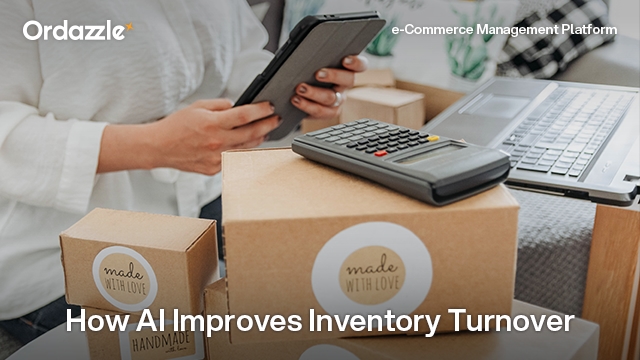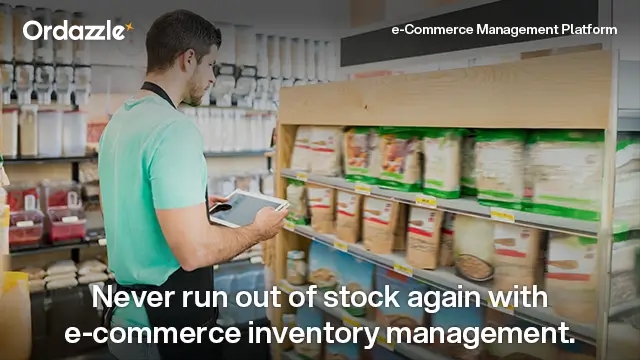How AI Can Help Optimise Inventory Turnover in e-Commerce and Retail

Sometimes, your products fly off the shelves. Other times, even deep discounts fail to get the results.
But usually, products drift along somewhere in the middle. The bottom line is that all e-Commerce and retail companies need a grip on what’s moving and how quickly.
The inventory turnover calculation informs everything from supplier relationships and pricing strategy to product lifecycle and promotions.
The turnover ratio also measures the efficacy of the company’s inventory management, forecasting, and sales and marketing expertise. A higher ratio implies strong sales. Conversely, a low ratio implies lackluster market demand, weak sales, or an inventory glut.
Either way, understanding where the sales winds are blowing will inform you on how to set your company’s sails.
With technologies like AI and ML, this task has become rather easy. In this blog post, we’ll go over what inventory turnover is and how AI capabilities and AI-based e-Commerce solutions can help you improve it.
What is Inventory Turnover?
Inventory turnover is the measure of time from the day a company purchases an item until it is sold.
A complete inventory turnover means the company sold its purchased stock minus any items lost to shrinkage or damage.
Successful e-Commerce and retail companies usually turn their inventory several times per year, but it varies by product category and industry.
For instance, the consumer packaged goods (CPG) industry usually has a high turnover, while high-end luxury goods, such as luxury handbags and apparel, see long production times and fewer units sold yearly.
Many challenges in inventory management can affect turnover, including poor supply chain planning, changing customer demands, and overstocking.
Fortunately, new-age technologies like AI and ML are making inventory management more automated, streamlined, and efficient.
Core AI Use Cases to Improve Inventory Turnover
With the use of cutting-edge technologies that improve efficiency, accuracy, and scalability, Artificial Intelligence (AI) is radically improving inventory turnover management.
Here are three key AI use cases that are causing this change:
1. Demand Forecasting Powered by AI-driven Predictive Analytics
AI-powered predictive analytics leverages statistical algorithms and machine learning models to predict future demand.
Predictive analytics generates precise demand estimates by examining industry patterns, outside variables like economic indicators and seasonal fluctuations, and past sales data.
Businesses can use AI-powered e-Commerce solution to predict demand fluctuations, allowing them to make proactive adjustments to inventory levels by anticipating demand drops and spikes based on predictive modeling.
Such precise projections aid in averting stockouts and overstocking by ensuring that inventory levels are in sync with actual customer requirements.
All in all, the insights help managers make well-informed decisions on pricing, purchasing, and supply chain management.
Also Read: AI-driven anomaly detection techniques in e-Commerce
2. Automated Inventory Classification
Leveraging AI in inventory categorisation allows you to automate the process of classification and management of inventory in an efficient, effective manner.
It allows you to classify products based on various parameters, including profitability, sales velocity, and demand patterns. Everything is done using machine learning algorithms.
The result? Warehouse organisation and inventory management are greatly streamlined thanks to automated categorisation.
Also, AI prioritises high-demand products by dynamically adjusting categorisation depending on shifting sales patterns and inventory turnover.
Most importantly, automated categorisation means you have up-to-date information on inventory turnover, allowing for improved strategic and operational planning.
3. Real-Time Inventory Management
AI allows you to leverage real-time data from several sources, including supply chain updates, stock levels, and sales transactions. This enables you to control and monitor inventory levels continually.
This proactive control over inventory means you can restock promptly and adjust stock levels as required. AI-powered e-Commerce solutions also offer real-time warnings for falling inventory levels, allowing you to restock on time.
Moreover, constant observation provides an unambiguous picture of the inventory at any given time, thereby minimising inconsistencies and enhancing stock precision.
This has a direct impact on customer satisfaction as it allows for faster and more precise order fulfillment, thanks to real-time data.
Take Charge of Your Inventory Turnover with Ordazzle’s Inventory Management Software
With the right inventory management solution in your tech stack, you can improve your inventory turnover ratio in a scalable, sustainable, and profitable manner.
Enter the state-of-the-art inventory management solution by Ordazzle. Our software has many features that will help you optimise and modernise your inventory management policies and processes.
For instance, such software enables you to keep track of your inventory in a continuous, real-time manner. All the systems across all the nodes in your supply chain reflect inventory changes immediately by tracking inventory depletion and sales and, accordingly, restocking.
Moreover, our inventory management software also helps streamline your SKU assignment and management, supply chain, automated purchase orders, and other features and functions.
This reduces errors, adds efficiencies, gives you more control, increases customer satisfaction, and generally makes your operations more profitable.
Contact us today and learn what makes our solution the best inventory management software out there.


